The History of the Gondola
Related Tours
The gondola is for sure the most famous boat in Venice; its unique and elegant design is almost a symbol of the floating city.
For centuries, Venetians have used rowing boats to move around the canals, but gondolas have not always looked like the ones we can see nowadays. How has the design of the gondola developed in the course of time?
The origins of the gondola
An ancient letter, written by the senator Cassiodoro in 537 AD, encourages the Venetians in this way: “Therefore let your ships, which you have tethered, like so many beasts of burden, to your walls, be repaired with diligent care”. We understand that the people of the lagoons kept their boat in front of the house exactly like people living on the mainland would keep their horse.
The first appearance of the word “gondola” in a Venetian document goes as far back as the 11th century. The term may derive from the Latin “cymbula”, meaning simply “little boat”.
Considering the inseparable link between the city and the waterways, these “little boats” must have always been part of the lagoon landscape.
The gondola is the most well-known among the traditional Venetian boats, but sandoli, mascarete, pupparin and several others share similar characteristics and long tradition.
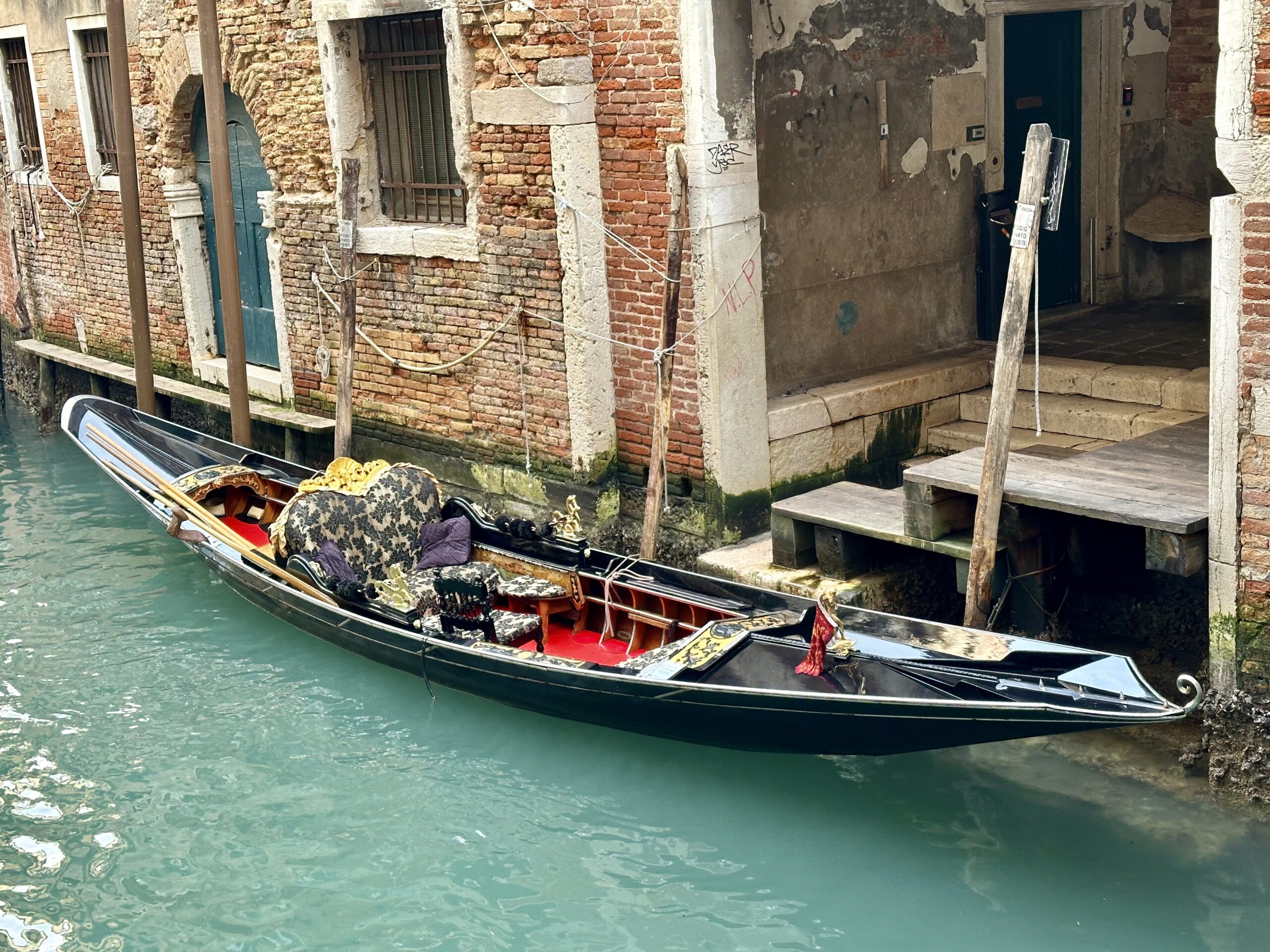
Some of the oldest images of gondolas can be seen in the paintings by Gentile Bellini and Vittore Carpaccio in the Accademia Galleries. In these works of the 15th century the boats are smaller, flatter and larger than the present ones. A light canopy covered with branches or fabrics was placed in the center of the boat to provide a shelter from the sun or the rain.
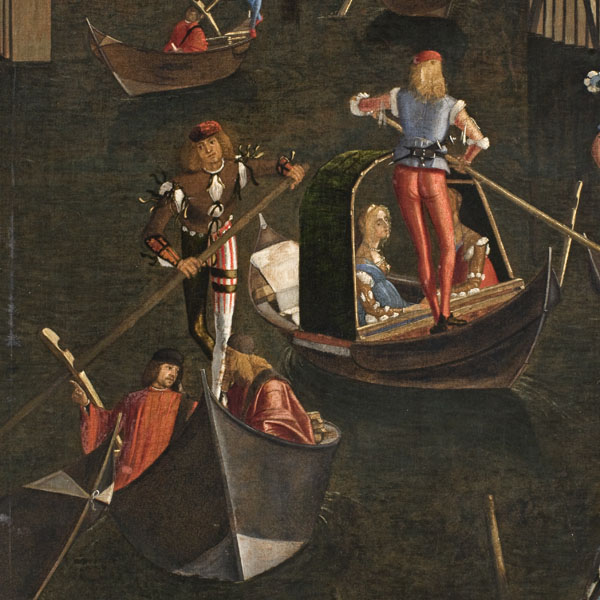
The development of a unique design
From the 16th century onward, gondola makers gradually introduced improvements to the design of the boat to make it the most suitable vessel to navigate in the Venetian canals.
A first, major change was to build a longer hull with the stern and prow raised from the water level: in this way, the gondola became easier to maneuver. On the raised prow, a ferro (iron bar) was placed, with spikes to protect the boat in case it hit other watercrafts.
The canopy was replaced by a closed cabin known as felze that guaranteed protection from the weather as well as from the eyes of other people.
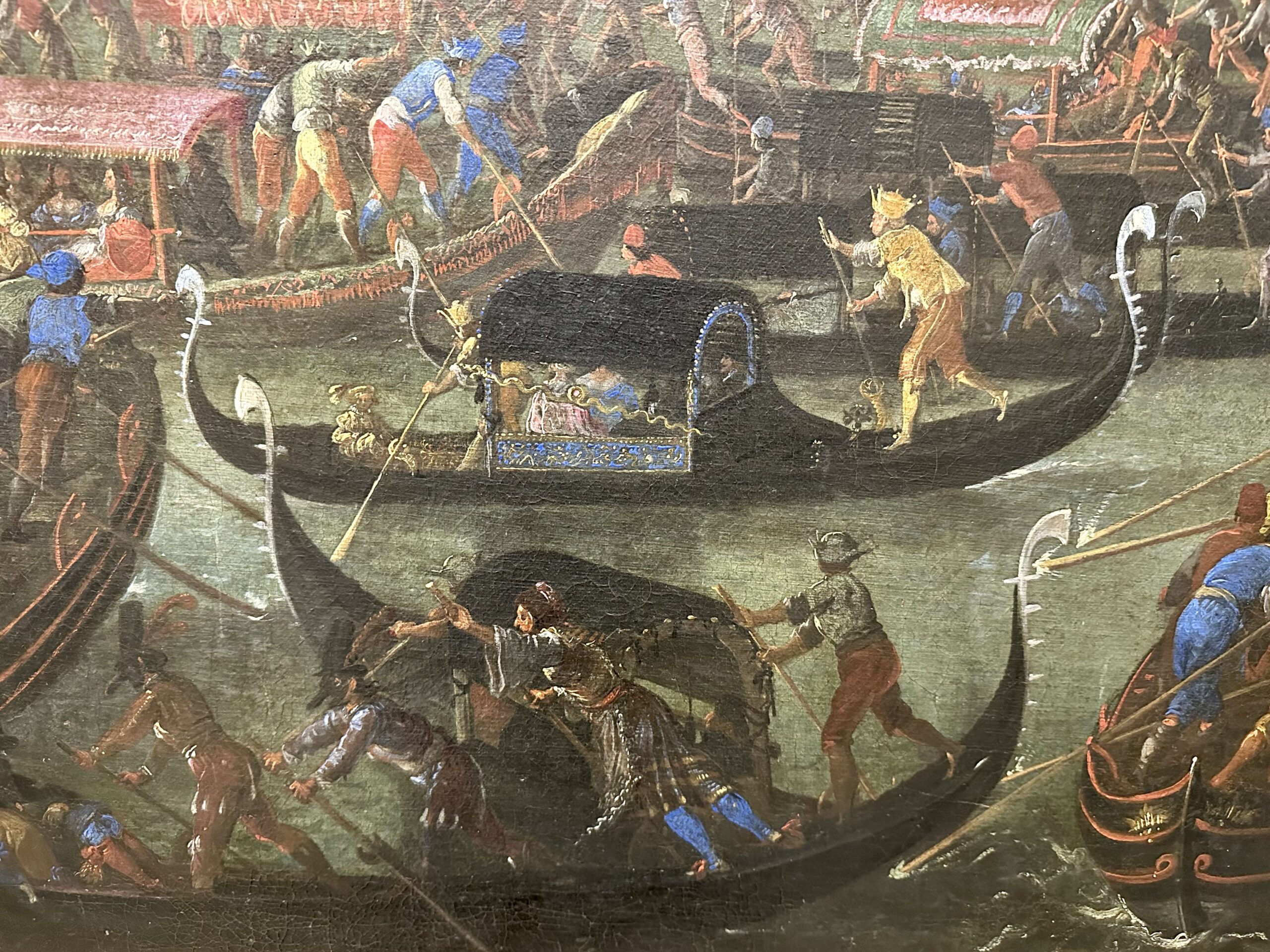
In the 18th century, the gondola looked almost like the modern ones: the measures were almost the same and the design of the ferro had transformed into the iconic one that is still in use.
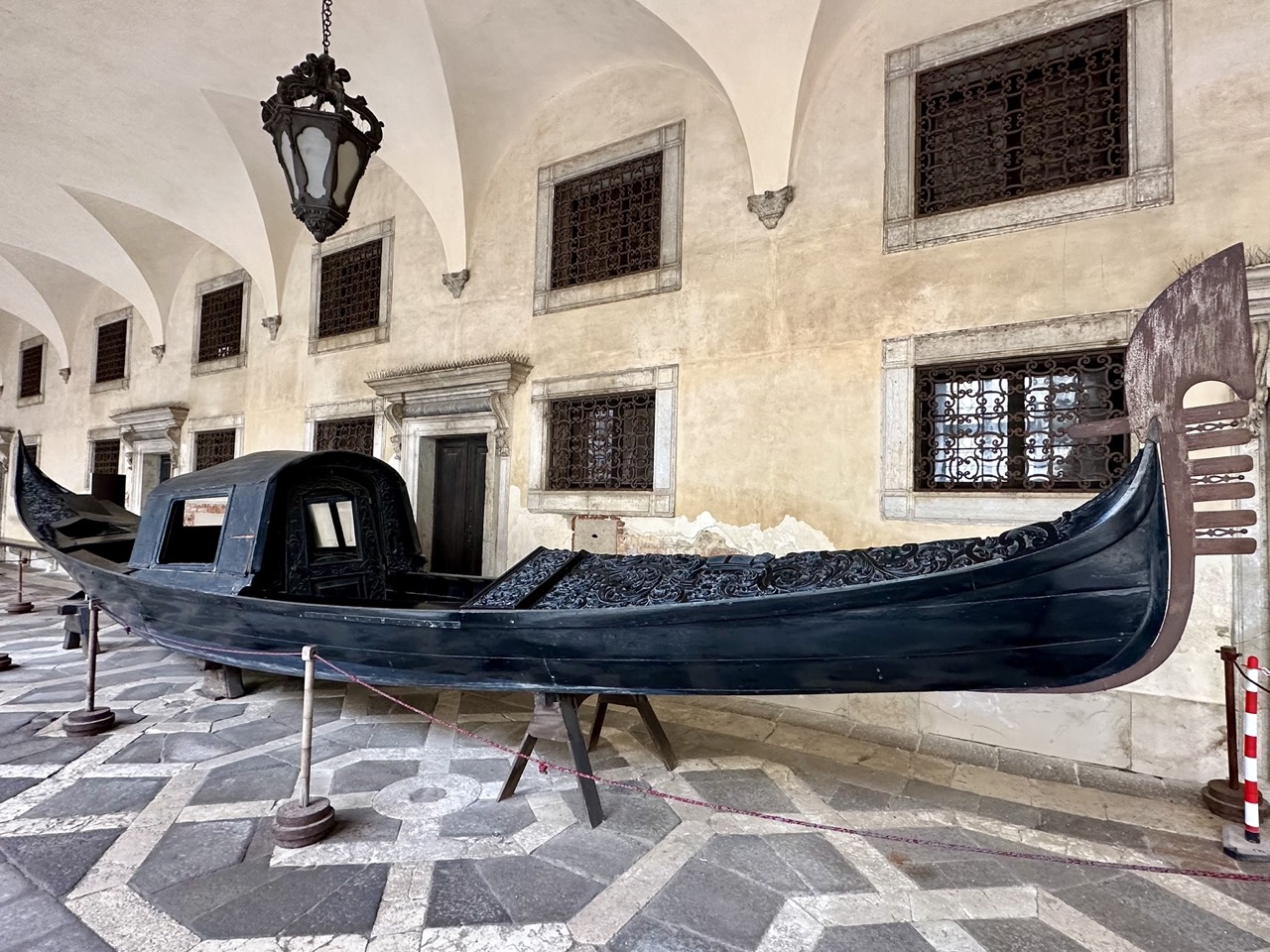
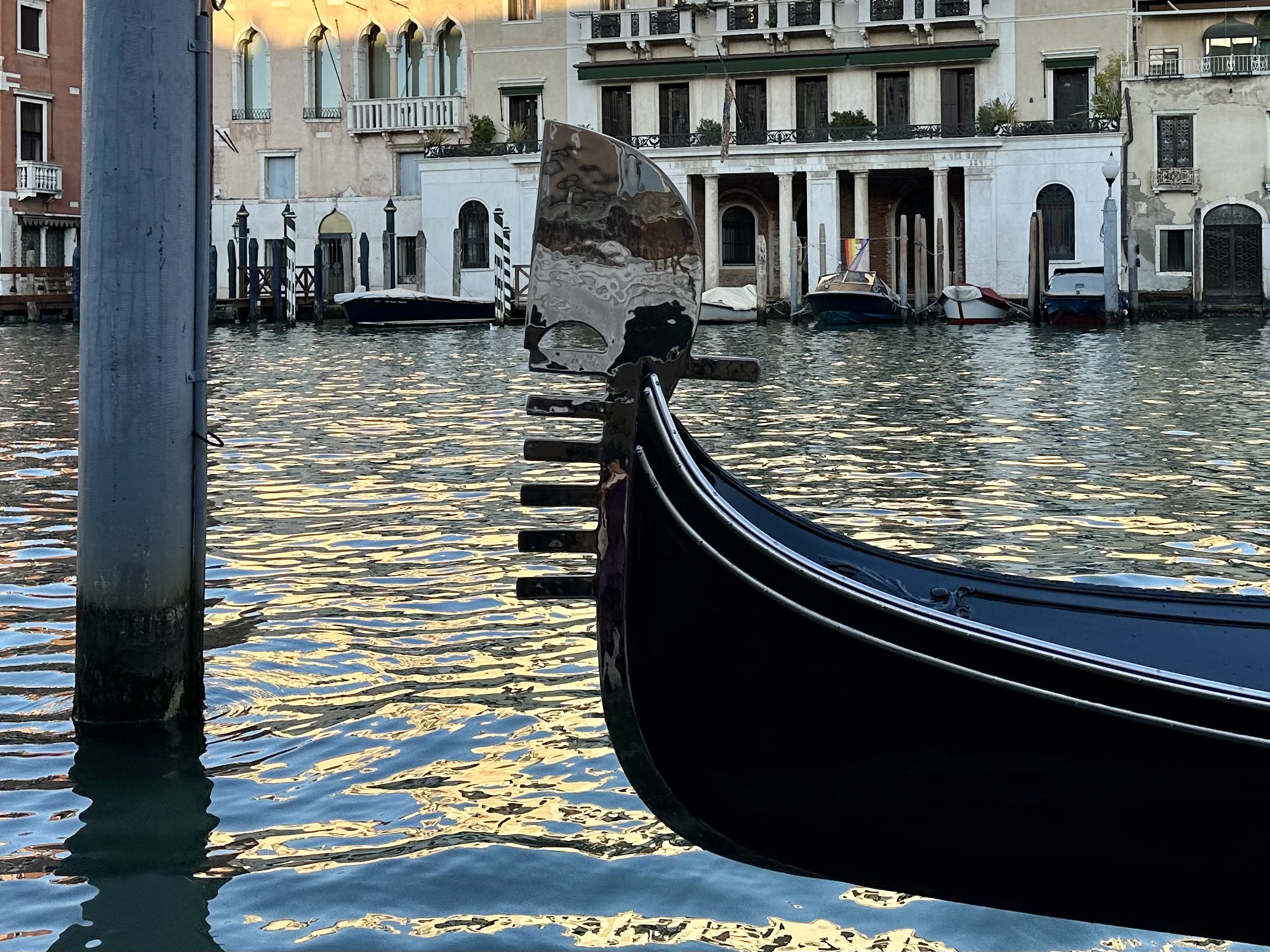
The asymmetrical gondola
The most interesting technical characteristic of the gondola was introduced only in the 19th century: in this period, the squerarioli (boat makers) started to build non-symmetrical gondolas, finding the perfect proportions to let the gondolier row easily with only one oar. Older gondolas were symmetrical or only slightly bending.
If we observe a gondola gliding in the Venetian canals, we can clearly see that it bends to the right: the right side is about 2,5cm lower than the left one. Thanks to this device, the boat would go straight even if the gondolier is using only one oar. Otherwise, it tends to turn toward the left.
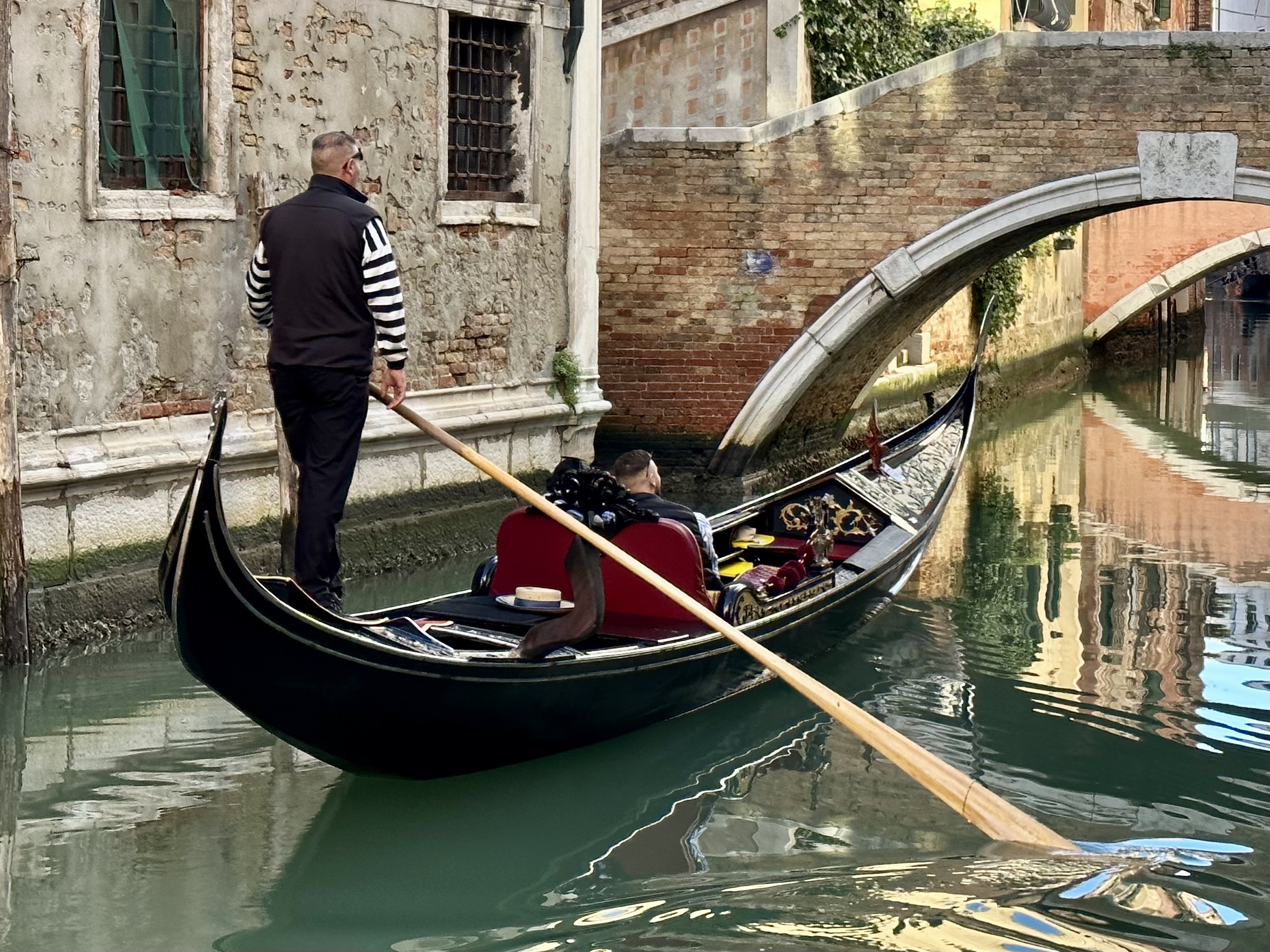
Adapting to modern times
Nowadays, the nearly 400 gondolas in Venice are used to take tourists around the canals, to enjoy the city from the water’s perspective. Thus, the open view has become much more important than the former privacy: this has led to the permanent removal of the felze, replaced by comfortable seats towards the stern, at the foot of the gondolier.
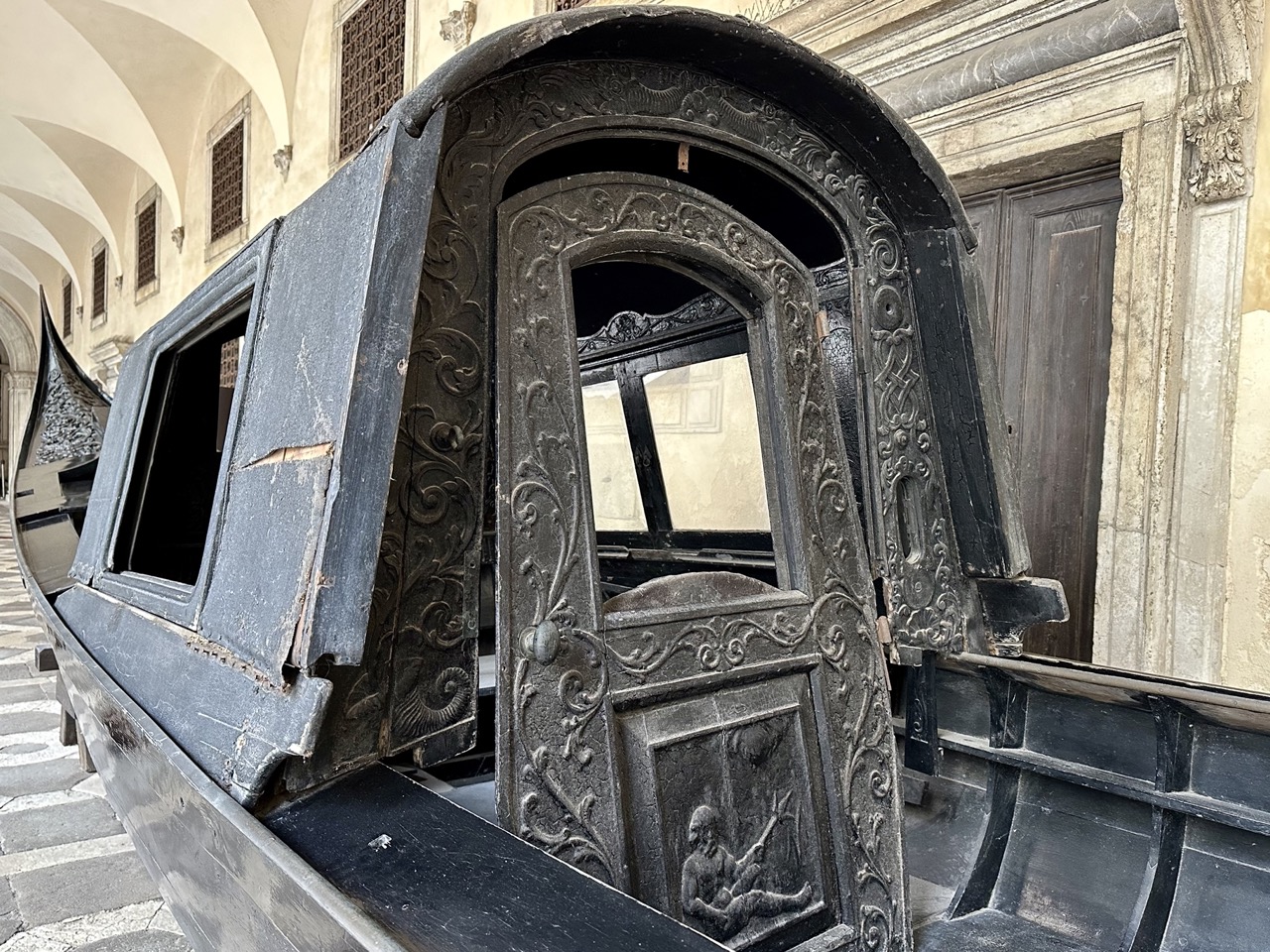
Another change to the structure of the gondola became necessary in the recent years due to the raise of the water level in the Venetian lagoon. On the edge of the stern there is another ferro, much smaller than the one on the prow, in the shape of a little curl. This is the highest point in the gondola, and when the tide rises there is the risk that it hits the bottom of low bridges. To solve the problem without compromising the traditional design of the boat, most gondolas now have the ferro da poppa than can be removed: it stays up when the tide allows, it can be bent down when the water rises. Everything has to be up with the times!

Gondolas are much more than fancy boats: they tell us a lot about the history of Venice itself. Take a tour with us to discover more secrets about the construction, the design, the use and the stories of these symbols of Venice.

